Francisco José de Goya y Lucientes (Fuendetodos, 1746 - Bordeaux,1828) was one of Spain’s most important painters and engravers. Just as his life straddled two centuries, so too his artistic production developed at a time in art history when a transition between two different epochs gradually occurred, at a time of transition to an art in which artists’ personal viewpoints and introspective themes were presented. Goya himself is considered one of the first painters of the “contemporary” era, in that his works are not strictly ascribable to one genre among those found in the late 18th and early 19th centuries, but rather can be grouped according to recurring themes. His early painting production, in fact, revolves around portraiture, while in his maturity he focused on themes very close to Romanticism, introducing scenes, situations and allegories with dreamlike and irrational tones. Some engravings, such as The Sleep of Nature Generates Monsters, have become icons that have spanned the years unchanged in their emotional impact and ability to provoke existential reflections in the viewer.
Stylistic turns are noticeable in his production that do not follow a linear course, but appear almost out of the blue. These are closely related to what was experienced firsthand by the artist, who witnessed many crucial historical changes in Spain and had to come to terms in adulthood with the onset of a disabling illness, due to which he lost his hearing permanently.

Francisco José de Goya y Lucientes was born on March 30, 1746, in Fuendetodos, a small town near Zaragoza. His father, José Benito de Goya Franque, was a master gilder, which probably led him to notice Francisco’s aptitude for drawing early on and arranged to place him, at age 14, in the workshop of José Luzán y Martínez. There, Goya came into contact with numerous masterpieces of the Italian Renaissance and Baroque (the master himself emulated Luca Giordano and Pietro da Cortona), studying and copying the works and improving ever more rapidly in technique. In Martínez’s workshop, Goya met several other pupils, including Francisco Bauyeu. It was with him that a 17-year-old Goya moved in 1763 to Madrid, a city fervent in artistic terms thanks to the patronage activities of King Charles III. Goya harbored a great desire to become the king’s painter, and Madrid was the right place to achieve that goal: a few years earlier, in 1752, the Real Academia de San Fernando, desired by Ferdinand VI on the model of the French one, had been inaugurated there. The Academia contributed to the training of young people who spread a renewed Spanish taste permeated by the influences of Italian art. Not coincidentally, also gravitating to Madrid were two great masters, called from Italy by Charles III for the Palacio Real building site: the neoclassicist Anton Raphael Mengs and the rococo master Giovanni Battista Tiepolo, very different from each other but explicitly wanted together by the sovereign as two of the most celebrated artists of the period. Goya was fascinated by the diversity of these two styles, preferring that of Tiepolo.
This, then, was the context in which Goya found himself spending three years of his youth. The chronicles give us back a boy with a resourceful and impetuous temperament, who did not back down from anything, whether it was a new experience or a rejection. Like the one he received when he twice attempted the competition to enter the Academia, among other things coming out defeated in the second attempt by his friend Bauyeu’s brother. Goya’s life was rather intertwined with that of the Bauyeu brothers, as the two achieved the same goals sought by Goya-entering the academy and becoming court painters-and became brothers-in-law to him. Goya in fact married Josefa “Pepa” Bayeu, a union that, however, was of little consequence to the artist, who often surrounded himself with lovers.
Goya began to consider leaving Madrid when Tiepolo died, in 1770, effectively interrupting the “rivalry” between him and Mengs that so captivated the young artist. This would seem to be the motivation that prompted Goya to undertake a trip to Rome, at his own expense. Thanks to the discovery of an autograph writing entitled Cuaderno Italiano, it is now possible to trace much information about this trip, such as the precise dates of the stay, from March-April 1770 until June 1771. In addition, we are accompanied in his prolific immersion in the Roman artistic milieu, between encounters with Giovani Battista Piranesi, whose style remained well imprinted in Goya’s imagination and traceable in future engravings, contacts with the works of Füssli, in the midst of the impending Romanticism, and the live study of masterpieces from previous centuries. Of all of them, Goya was fascinated by Raphael’s Stanze, Annibale Carracci’s vault of Palazzo Farnese, and the altarpiece of the Church of the Holy Trinity of the Spaniards by Corrado Giaquinto, a painter Goya had already met in person in Spain. Goya’s Italian trip was also decisive on his return to his native country, as just having had this experience opened numerous doors for him: he was commissioned to paint the frescoes of the Basilica of Our Lady of Pilar in Zaragoza, and other prestigious commissions that helped consolidate his fame.
It was also thanks to Francisco Bauyeu that in 1774 Goya received a very important commission from Mengs himself, at that time superintendent of fine arts, namely, the creation of a series of cartoons for the tapestries of the Real Fabrica of Santa Barbara. Mengs’ intent was to involve young Spanish painters who could render local taste, since the tapestries had always hitherto been made in the Flemish style, something that since Flanders was no longer a Spanish dominion following the Peace of Utrecht in 1713 no longer found reason to do. The cartoons made by Goya, in which figures with popular subjects (the so-called Spanish majos and majas, see The Parasol, 1777), festivals and amusements, were considered to be of an excellent standard, indeed of such pictorial complexity that they drew criticism from the weavers for the objective difficulty in reproducing details. The cartoons further increased Goya’s fame to the point that he was finally called into the Academia in 1780 for recognized merit.
After joining the Academia, Goya began to devote himself to portraiture, producing works of great psychological interpretation. Precisely because of this ability, he was involved in a delicate mission, that of portraying the king’s brother, Don Luís, sent away from the court for wanting at all costs to take a non-noble girl as his wife. The woman, much younger than her husband, suffered from enforced isolation, so Goya found himself in a turbulent family climate. Several artists had attempted and then left the commission before him, yet Goya with his unique sensibility managed to finish the portraits and render on canvas the complexity of the protagonists’ feelings. See The Family of the Infante Don Luís of Bourbon (1783). As a result of this commission, Goya began to make a certain name for himself among the nobility and received numerous requests as a portrait painter, see for example The Dukes of Osuna with their children (1788) and in the meantime he finally became Pintor del Rey in 1786. It is said that Goya wanted to flaunt his achievements by buying himself a carriage, reflecting a rather cheeky character.
Goya remained at court even after the death of Charles III and the subsequent proclamation of Charles IV, who asked him to stop the work he was pursuing and devote himself to new tapestries for his studio with rural and cheerful themes. In letters sent to his fraternal friend Zapater, Goya expressed his disappointment with the episode, and not surprisingly, the cartoons later made concealed a critique of some of the dynamics seen at court, including hypocrisies, unions of convenience and the widespread climate of uncertainty following the French Revolution. The times of aristocratic merriment and pageantry were now too far removed from reality. Moreover, Goya did not see in the figure of Charles IV a ruler he could count on and began to fear for his work. Once he had completed the cartoons commissioned by the king in 1792, he decided to leave the court and go to Andalusia. Upon arriving in Seville, however, he falls ill with an illness that is still unknown today (it is alternately thought of as syphilis or lead poisoning from lead contained in the colors) that forces him to bed paralyzed. Goya overcomes the illness, but will remain deaf.
As a result of this event, Goya changes the style and themes of his painting and introduces for the first time the themes with which he will become famous to this day, the more dreamlike, allegorical and mysterious ones. The greatest expression of this change are the Capricci, a series of etchings published in 1799 that were withdrawn by the Inquisition only two days after publication. Meanwhile, by 1795 Goya had become director of painting at the Academia, his brother-in-law Bayeu had passed away, and he made the acquaintance of Duchess Maria Teresa Cayetana de Silva, of whom he produced a celebrated portrait. In the meantime, Goya’s protector Melchor de Jovellanos, who appointed Goya Primero Pintor de Cámera, and then Manuel Godoy, lover of Charles IV’s wife, took turns in the role of minister. Among the paintings belonging to Godoy, two twin canvases popped up that went down in history: the Maja vestida (1800-1808) and the Maja desnuda (1790-1800).
The prime minister had meanwhile been arrested and removed from office in 1808, following the entry of French armies into Spain and the abdication of Charles IV in favor of his son Ferdinand VII, later replaced by Napoleon with his brother Joseph Bonaparte. The Spanish aristocracy did not accept Bonaparte’s arrival and favored a revolt by the Spanish people. As a result of the clashes, the Constitution was proclaimed in 1812 and Bonaparte was ousted the following year. Ferdinand VII returned to the Spanish throne, but he proved intransigent and annulled the Constitution. The historical upheavals described are strongly present in Goya through the engravings of the Disasters of War cycle (c. 1810-1820.) and a number of paintings made between 1812 and 1814 for the Academia, in which dreamlike visions are abandoned in favor of scenes of the Spanish revolt narrated from a documentary point of view, including two canvases that in 1814 Goya asked the Council of Regencies, a governmental body active between Bonaparte’s ouster and the return of Ferdinand VII, to finance for him, on which he would report the courage of the Spanish people during the rebellion.
Leaving the court for good, in 1819 Goya moved to a house on the outskirts of Madrid, known by all as “la Quinta del sordo” (la Quinta was the name by which they identified country houses) together with Leocadia Zorrilla, a very young girl he had met years earlier at his son’s wedding and with whom he was reunited after several years apart. These are years plagued by quarrels with Leocadia and new health problems. The situation brings a new change in Goya’s works, visible in the so-called Black Paintings, oil paintings made on the walls of the Fifth in which there are again dark and cryptic scenes in which the artist reflects on evil as an omnipresent entity in the World. The best known is Saturn devouring one of his children (1821-1823). In 1823, however, Goya abandoned the Quinta to escape repression, giving it to his nephew. In the late 1800s the house then passed to Baron d’Erlanger, who ordered the paintings transferred to canvas and donated them to the Prado Museum. It would finally be demolished in 1910. In 1824, taking advantage of the general amnesty called by Ferdinand VII, Goya asked for and obtained a license to go to Plomieres to carry out treatments. In fact, he went to Bordeaux to join other friends who were opponents of the regime. He lived here a few years in tranquility, as is evident from his last works, which are much more serene than the Black Paintings. He died in Bordeaux in 1828 from another illness, at the age of 82. His remains today are preserved in the San Antonio Hermitage of Florida, under some frescoes he painted.
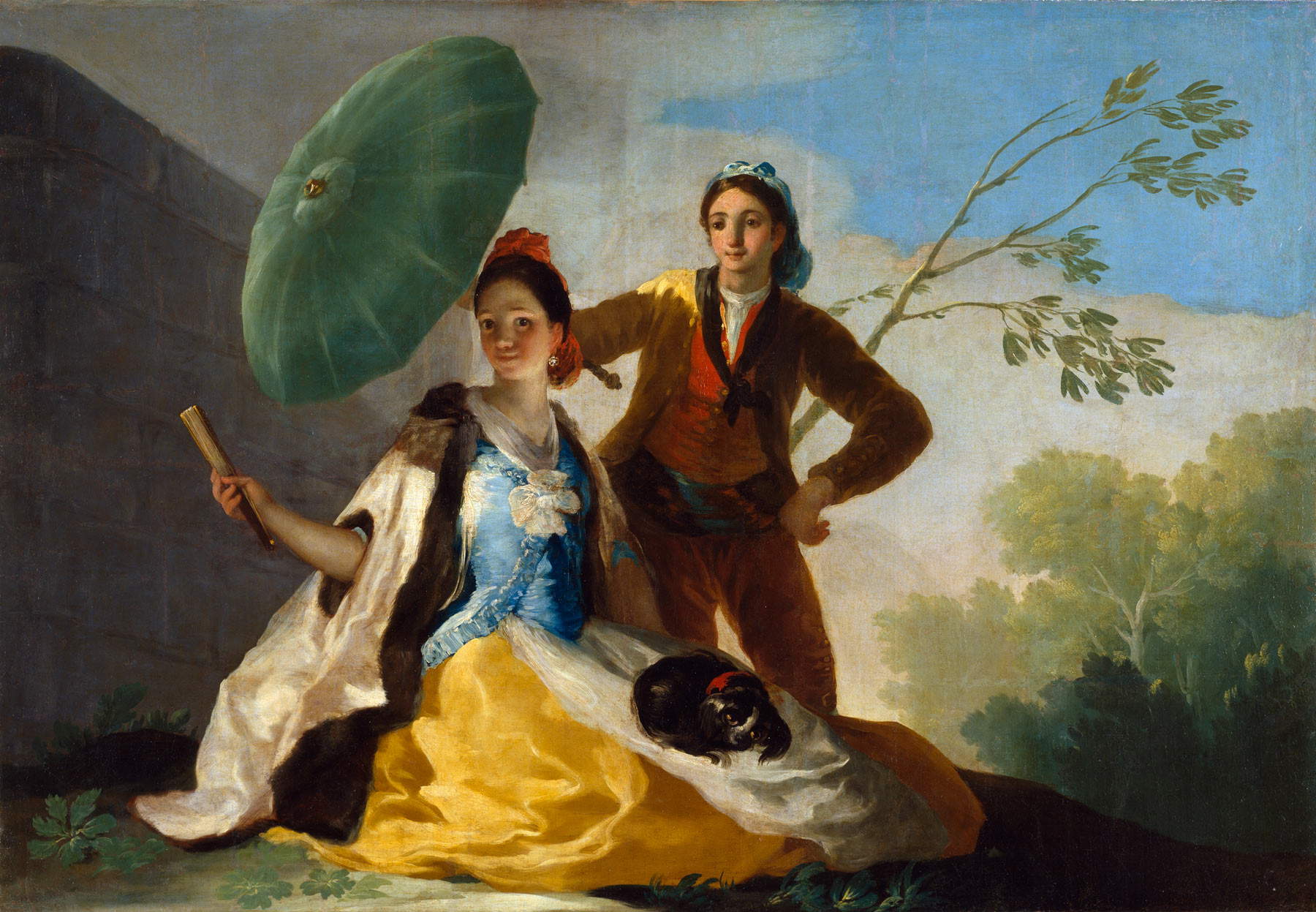
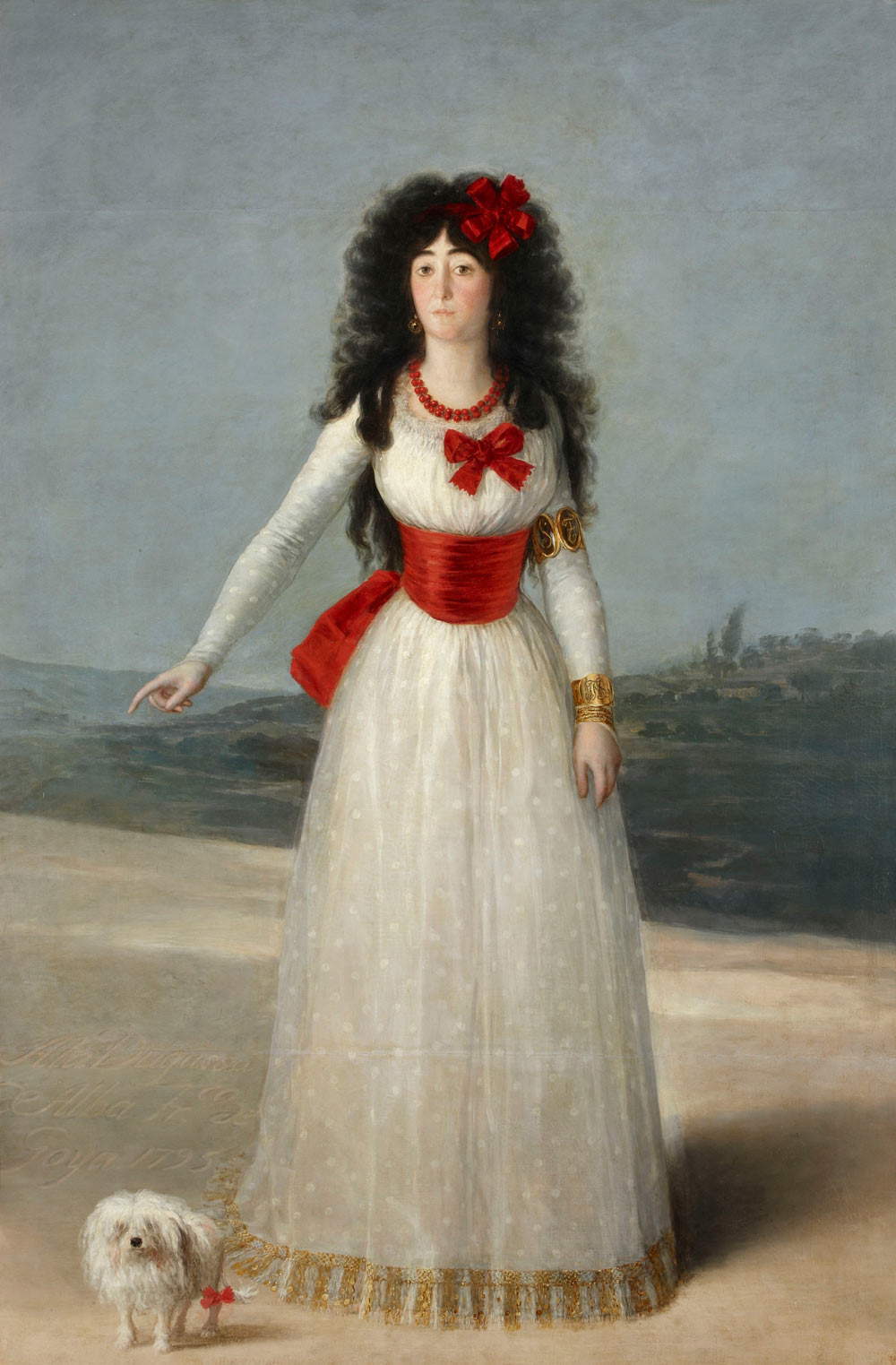
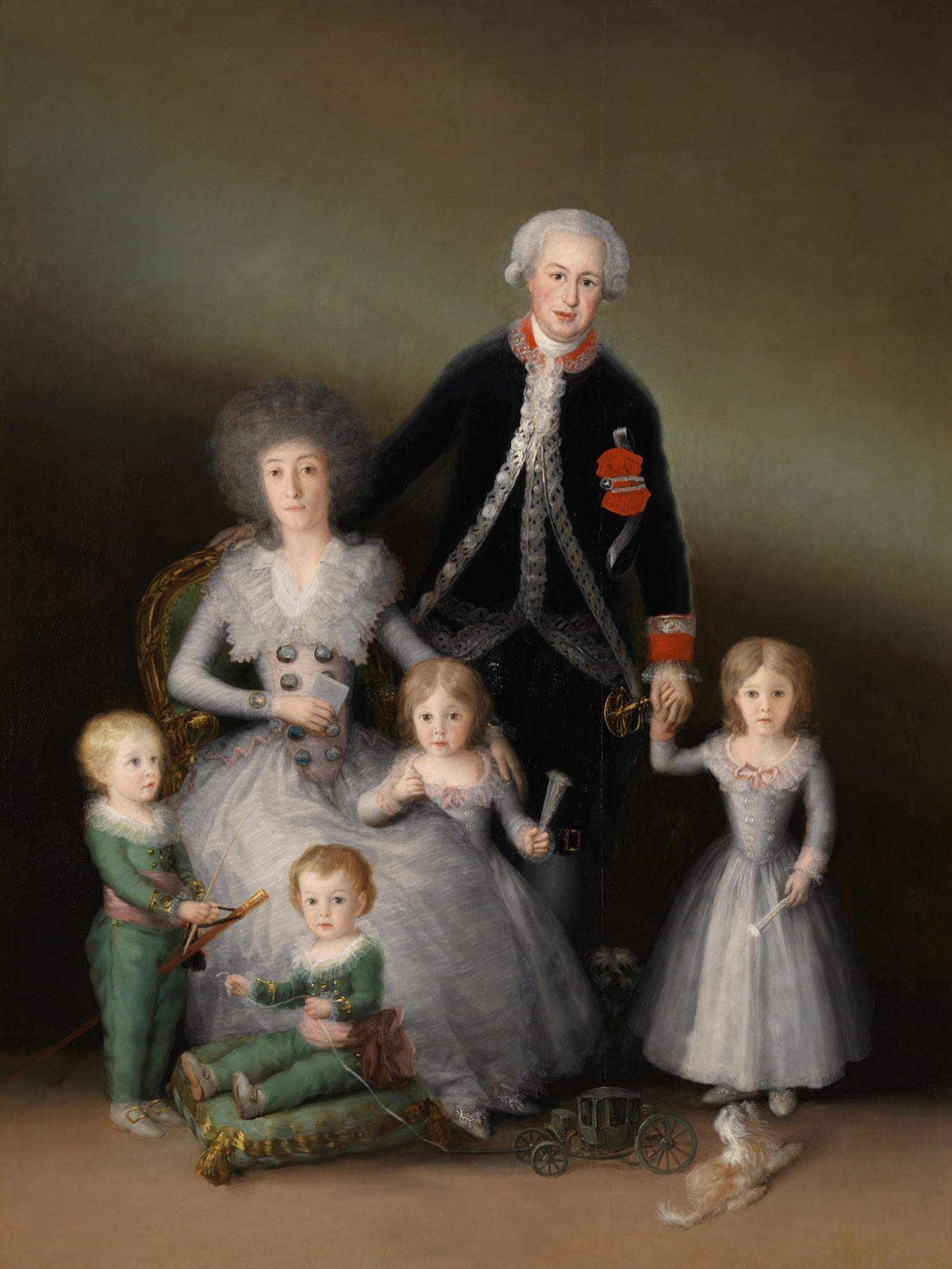
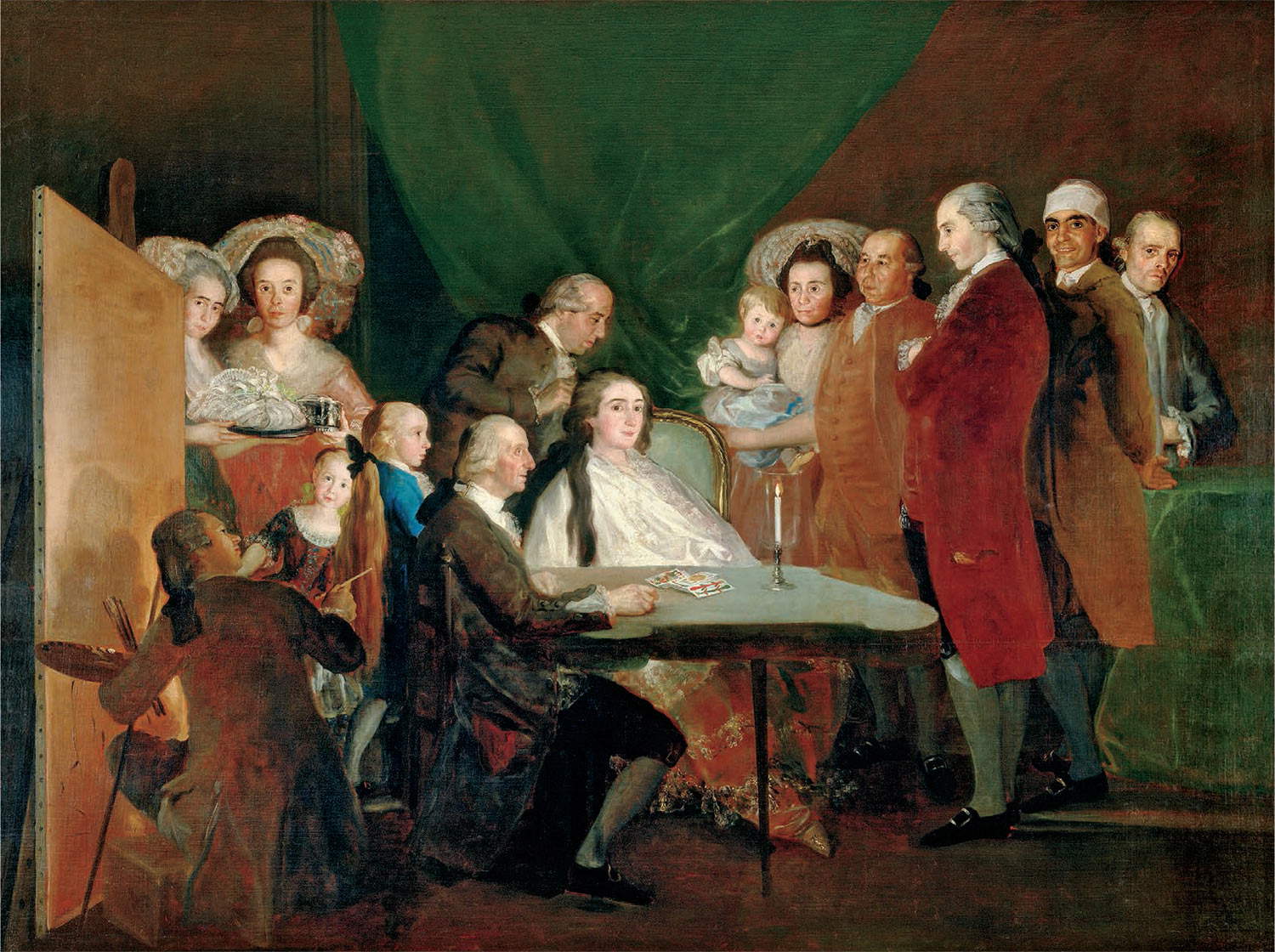
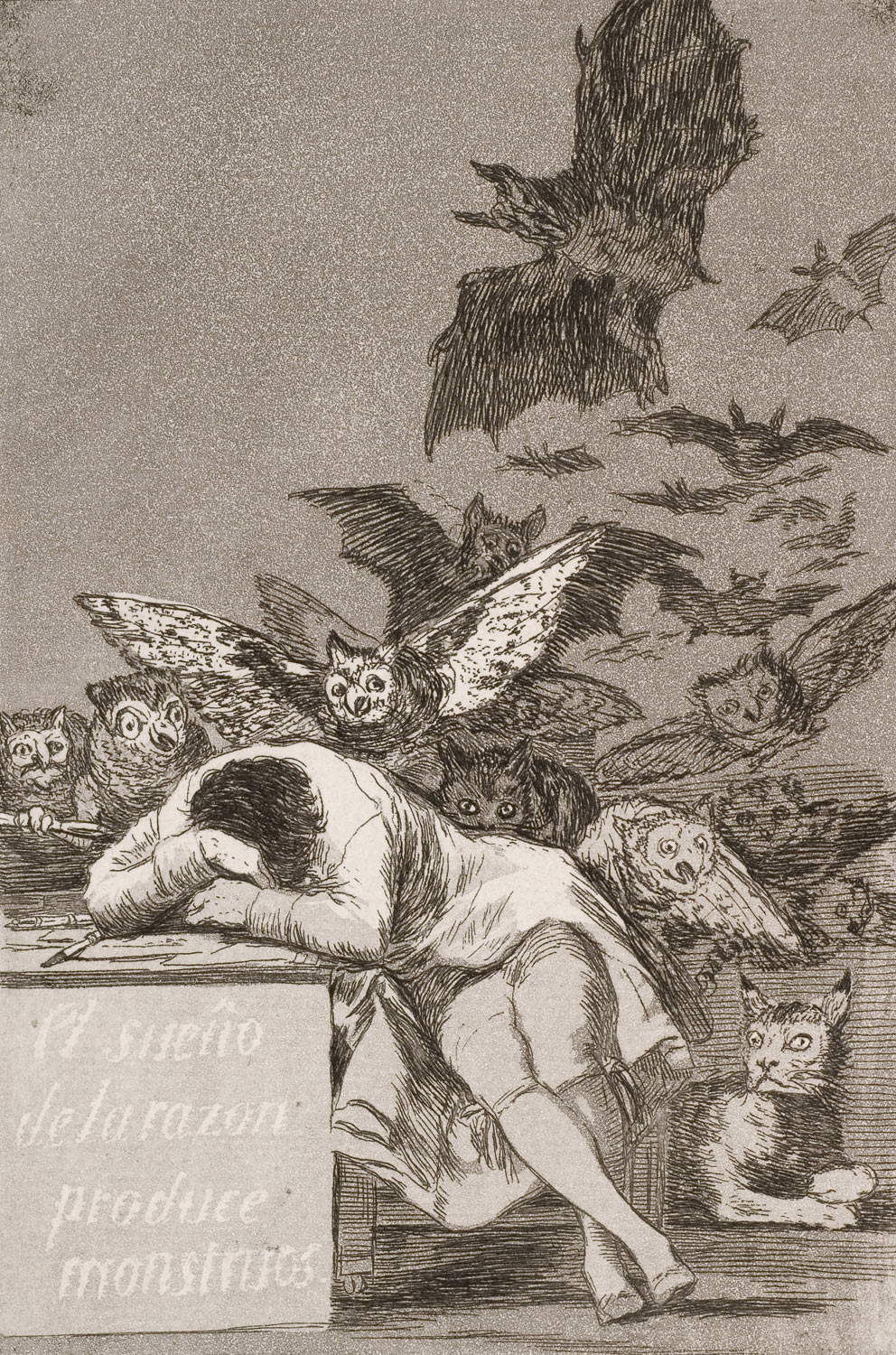
Goya’s distinctiveness as a painter lies in theimpossibility of placing him in a specific current or style, given his utterly personal exploration of themes that varied with particular events in his life. He also tried his hand at a variety of techniques, including preparatory cartoons for tapestries, frescoes, paintings on canvas, engravings and even works done in oils on the walls of his country home. However, his sensibility can be seen as that of an artist who anticipated Romanticism in many ways, positioning himself as a transitional figure to this era in terms of his artistic experiences and proximity of themes addressed.
We can see how the first part of his activity as a painter is characterized by a prevalence of light, luminous tones and light, frivolous themes. These are the years of his training and association with aristocratic circles and their “whims.” Goya, however, stood out clearly from the more academic painters, demonstrating a very personal ease in the use of colors and brushstrokes that gave the paintings very vital and expressive vibrations. In portraiture, too, he distinguished himself by his ability to go beyond the faithful reproduction of the subject and render its psychological characterization. Moreover, the first part of the artist’s career, exemplified by a youthful painting such as The Parasol, executed when the artist was in his early twenties and a striking example of the frivolous subjects that abound in his production of the time, is under the banner of the Tiepolesque models, to which the work conserved at the Prado openly refers: airy and luminous, it allows itself great freedom even in the pictorial drafting, which is so spontaneous as to be almost like a sketch. During this phase of his career, the artist focused mainly on observing Spanish society and its customs.
The illness contracted in 1792 marks the first radical change in his pictorial production. The themes become dark and introspective, investigating existential issues. Early experiments can be traced in a series of small paintings of dramatic and tragic scenes, such as shipwrecks, fires, and asylum interiors. The climax came with the Capriccios of 1799, a series of eighty etchings in which Goya presents vices, superstitions, abuses, witchcraft, and obscure magical rituals, explained in detail through captions accompanying the images(read also the in-depth study on Cuaderno C). Initially, the cover of Capricci was to include the very famous “The Sleep of Reason Breeds Monsters,” which symbolizes precisely the end of the post-French Revolution Enlightenment and imagines a new reality in which moral boundaries no longer exist and chaos proliferates undisturbed.
One of the “transition” paintings between the youthful and mature periods is the celebrated Maja desnuda, a work that takes Francisco Goya’s interest in his contemporaries to extremes. Circumstances about the commissioning are unknown, but it is said that the subject depicted was either the Duchess Cayetana or, much more plausibly, Manuel Godoy’s mistress. Godoy probably requested the two paintings for his private cabinet, since they were made so that by raising the painting with the “vestida,” the “desnuda” would appear below, and since the features of the two women are different, keeping the identity of his mistress somewhat secret. The Maja desnuda represents the first example in European art in which a woman without veils is not representative of a mythological character but is a true object of pleasure. The daring nature of the above paintings will bring Goya before the Inquisition tribunal in 1811, when they were found upon Godoy’s death among his possessions. It is a painting, in fact, disconcerting for theexhibited eroticism of a woman who, as mentioned, was not even saved from mythological justification.
About fifteen years and numerous historical vicissitudes later, Goya’s pictorial narrative shifts to episodes of war, which the artist reproduces with a documentary slant, as someone who has experienced what he recounts on his own skin and leads us into the thick of things. Prominent among these works is The May 3, 1808: Shootings at the mountain of Prince Pius, a raw and impactful masterpiece. It is a striking scene depicting the execution of a number of patriots, set against a somber backdrop that calls to mind Goya’s bleakest, the one fascinated by the themes of the occult and the witchcraft (in fact, there are numerous works by Goya devoted to the theme of witchcraft, including sabbaths, monsters and apparitions of ghosts that often become allegories of the Spain of the time). It is a painting cloaked in tragedy, a drama also accentuated by the gesture of the character dressed in the white shirt who spreads his arms out almost as if to ask for mercy, which will not be granted. Having experienced firsthand some of humanity’s worst episodes during his lifetime is surely behind the Black Paintings of the Deaf Fifth, made when the artist was in his later years. A new depiction of evil, the absolute protagonist of representations where man is practically absent, is evident here. This abundance of dramatic works at this stage of his career has been read as a reaction to the defeat of the Enlightenment and the prevalence of those “monsters” generated by the sleep of reason that Goya had denounced with his art.
His last known work is the Milkmaid of Bordeaux (1827-28), where the colors and tones become relaxed, corresponding to the serenity found in the last years of his life spent in France, far from wars and regimes.
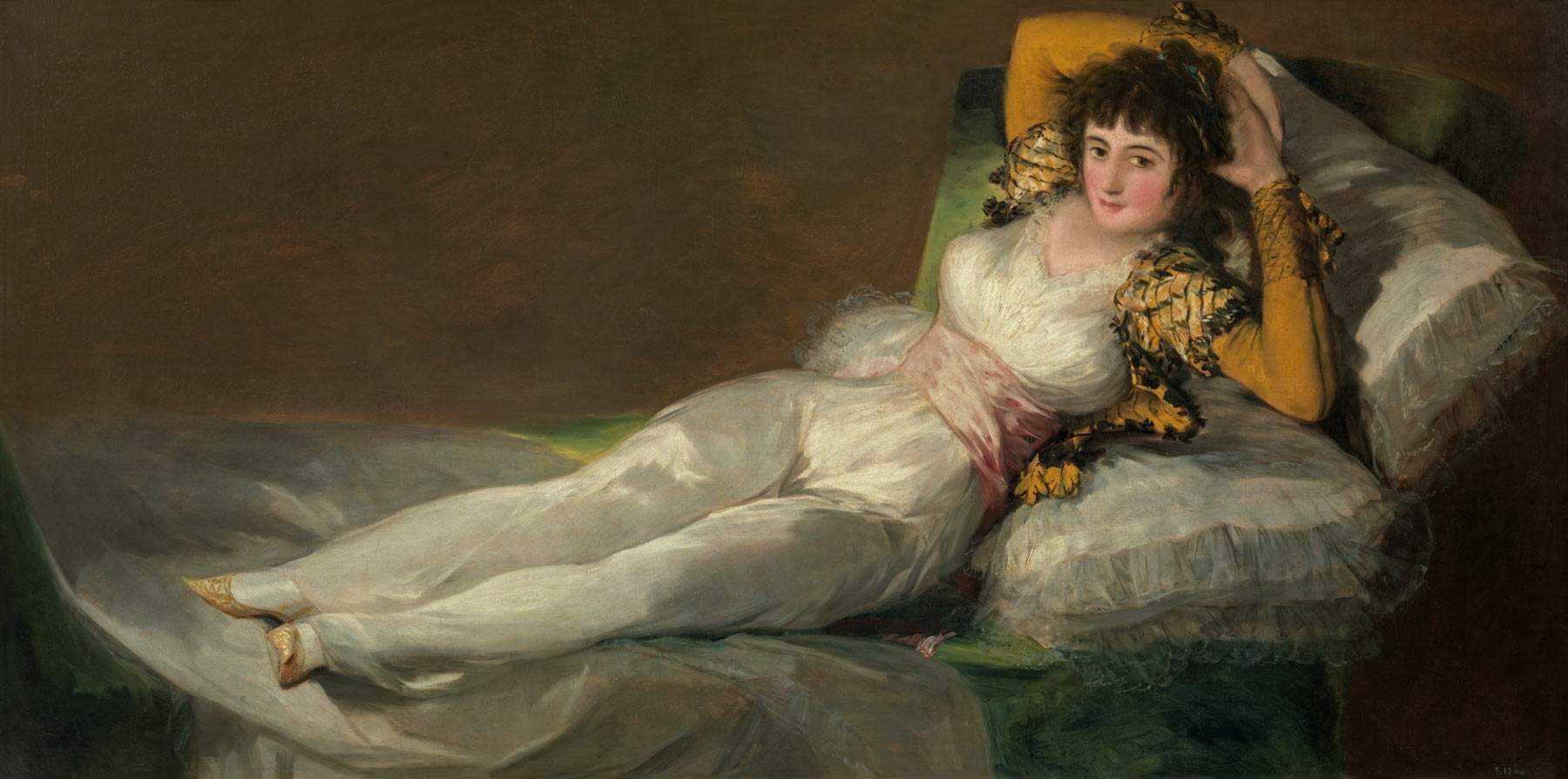
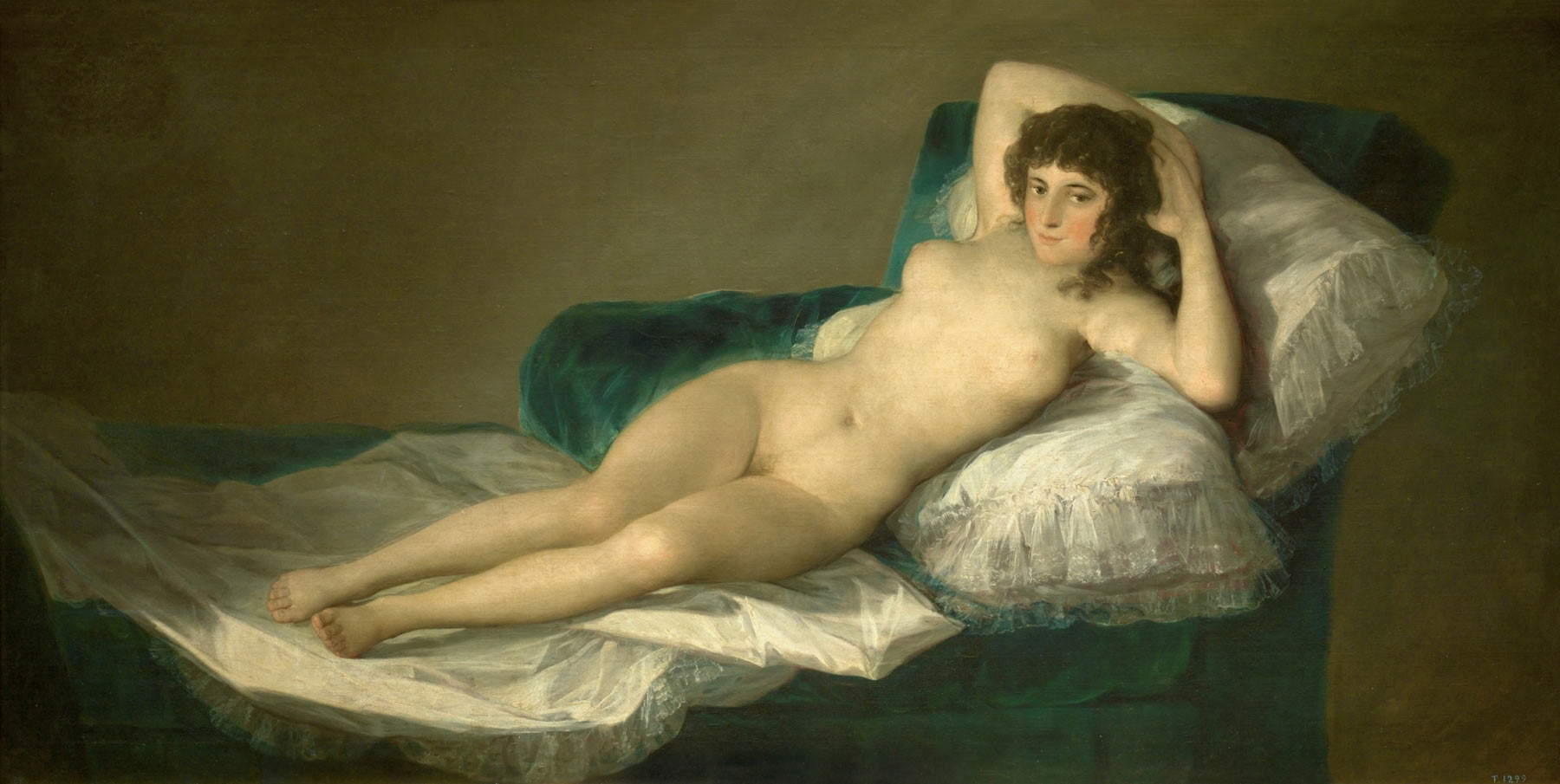
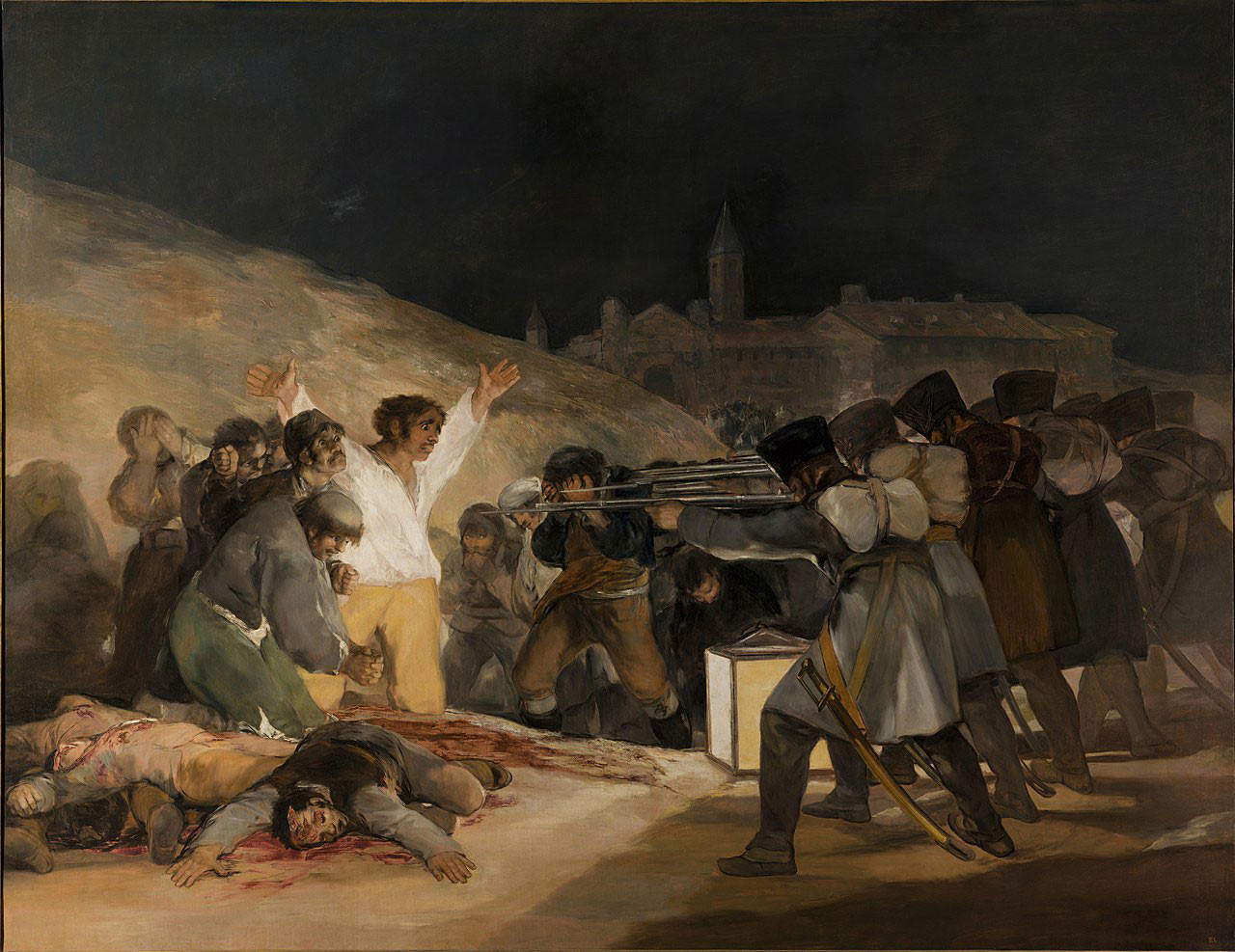
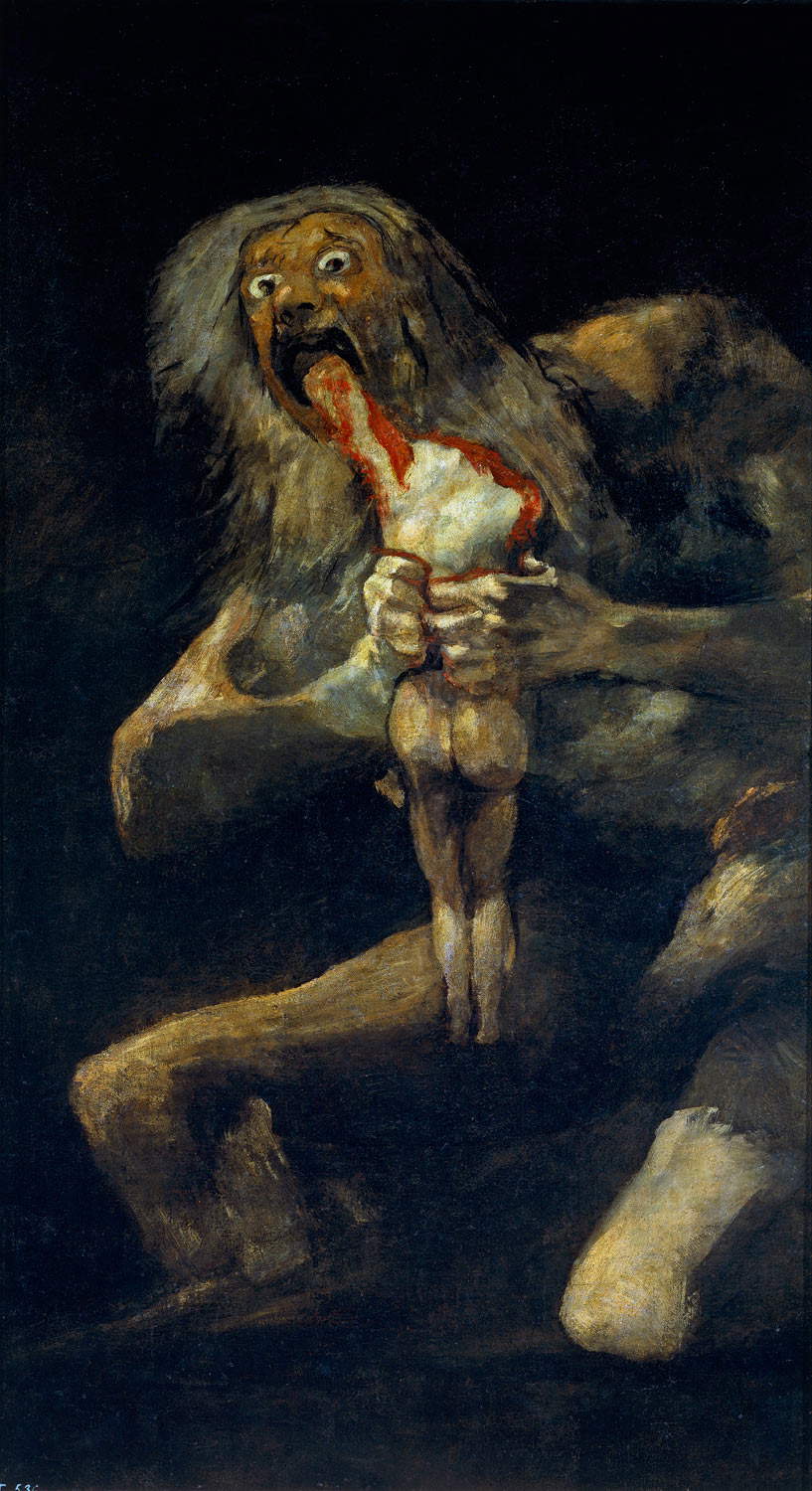
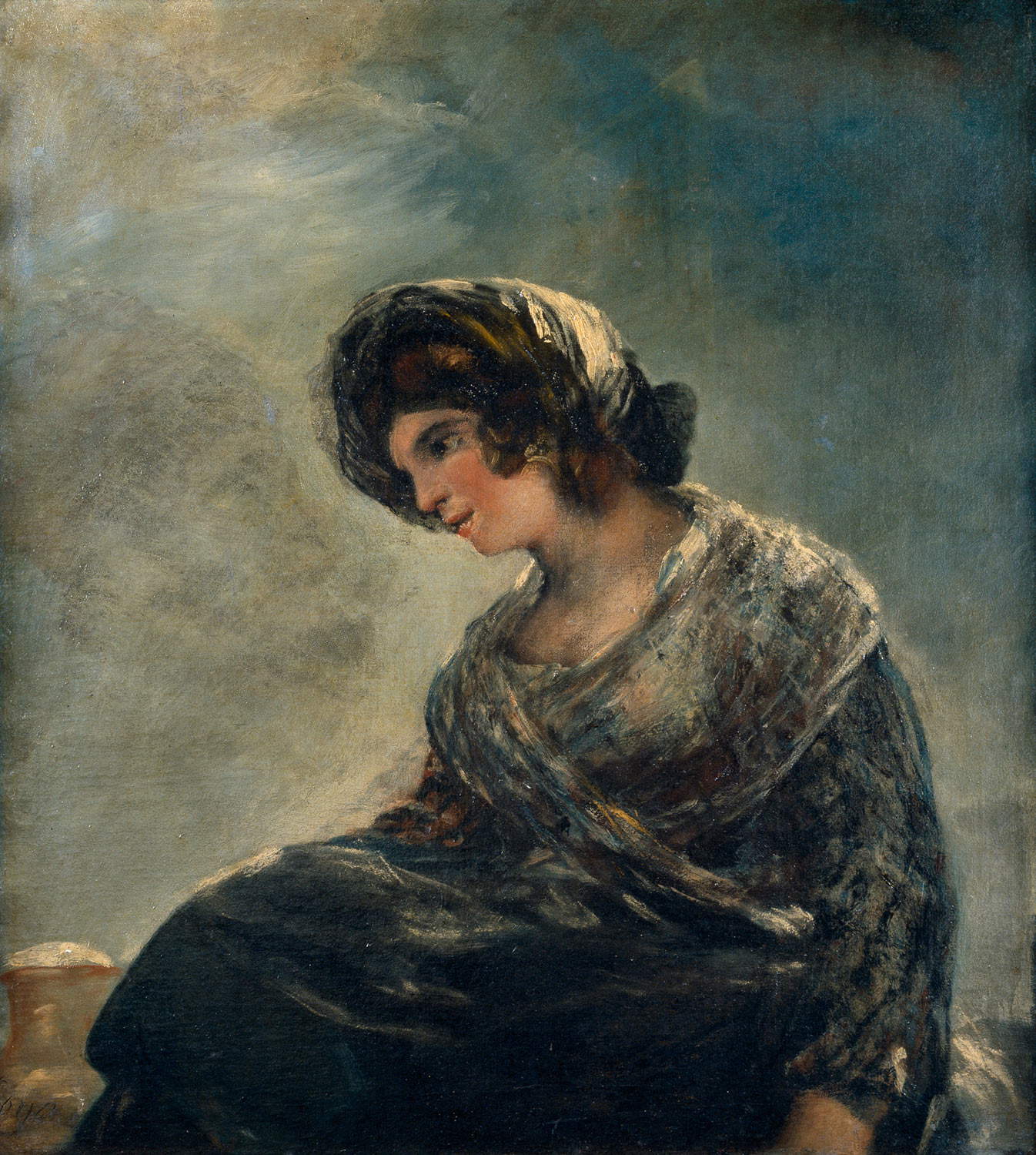
The most important nucleus of Francisco Goya’s works is at the Prado Museum in Madrid, where it is possible to see paintings and drawings arranged throughout the Spanish painter’s career (from the Parasole to the Maja desnuda and the Maja vestida, from the Vendemmia to the Fucilazioni del 3 maggio 1808, from The Witches’ Sabbath to Saturn Devouring His Children). In addition, the Madrid museum also recently acquired Francisco Goya’s first known work, the painting Aníbal vencedor, que por primera vez mira Italia desde los Alpes, dating from 1771.
Other important works are in several Spanish museums (notably at the Real Academia de San Fernando in Madrid, and some works are also at the Museum of Zaragoza), the National Gallery in London, the Nationalmuseum in Stockholm, the Metropolitan in New York, and several other institutions. A curiosity: in the French town of Castres there is a museum named after Goya, the Musée Goya, where some of his works, including a Self-Portrait of him, are all collected in one room. It is a museum entirely devoted to Spanish art and owes its name to the fact that the nucleus that actually enabled the opening of the museum, the Briguiboul bequest, had been put together by a collector who had a strong passion for Spanish painting and had gathered three works by Goya, who therefore has a special role in the museum.
There are works by Goya in Italy as well: The Family of Infante Don Luis of Bourbon at the Magnani-Rocca Foundation in Traversetolo, the Portrait of Maria Luisa of Parma at the National Museum of Capodimonte in Naples, and the Portrait of María Luisa de Borbón y Vallabriga at the Uffizi in Florence.
 |
| Francisco Goya, life and works of the great Spanish painter of the eighteenth-nineteenth century |
Warning: the translation into English of the original Italian article was created using automatic tools. We undertake to review all articles, but we do not guarantee the total absence of inaccuracies in the translation due to the program. You can find the original by clicking on the ITA button. If you find any mistake,please contact us.